L2- Pathology of Hypertension

Hypertension
It is persistent elevation of blood pressure above 140/90
-It may be primary (essential) or secondary.
– Each type may be benign or malignant (according to severity).
– Each type can affect many organs the most important of which are…heart, blood vessels, kidney, brain and retina
Secondary hypertension
Secondary to….
1- Renal…renal ischemia.
2- Endocrine… hyperaldosteronism, pheochromocytoma, hyperthyroidism.
3- Neurogenic.. Brain tumors or encephalitis.
4- Coarctation of the aorta.
5- Stress, psychogenic, post-operative.
Primary (Essential) hypertension
It is hypertension of unknown etiology but there are certain predisposing factors
a. Familial predisposition.
b. High salt intake
c. Cigarette smoking, alcoholism.
d. Emotional stress.
E. Lack of exercise.
Pathogenesis of hypertension
MEAN ARTERIAL BLOOD PRESSURE
= CARDIAC OUTPUT X TOTAL PERIPHERAL RESISTANCE
BP= C.O X TPR
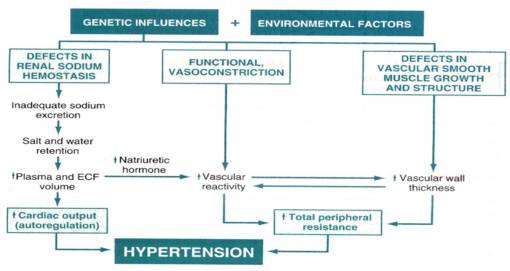
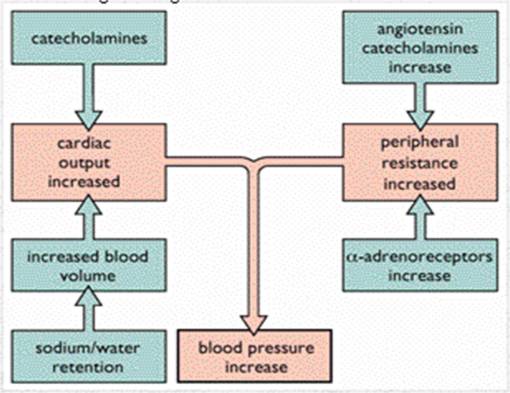
Effects of hypertension
Heart changes.
Vascular changes
Renal changes.
Brain changes.
Retinal lesions.
Causes of death ???
I- Benign Hypertension
1) Heart Changes
-With increasing pressure, the left ventricular myocardium undergoes hypertrophy.
– With hypertension, the severity of atheromatous lesions are usually more severe.
– Coronary blood flow may be insufficient leading to ischemic heart diseases
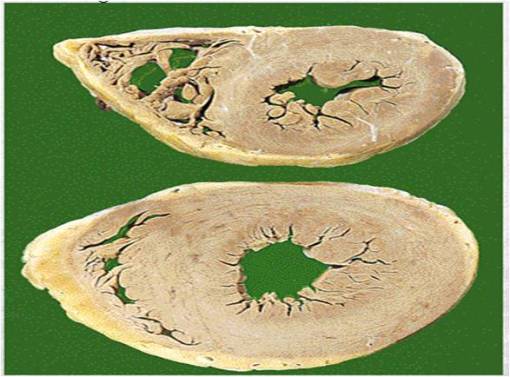
Left ventricular hypertrophy
Left ventricular failure is a common complication of hypertension
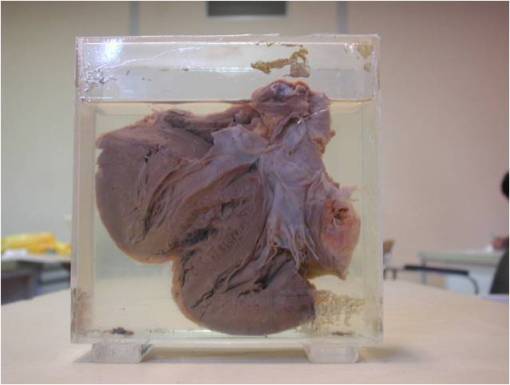
2) vascular changes
1- Aorta
– Hypertension predisposes to development of severe atheroma, abdominal aortic aneurysms and dissection.
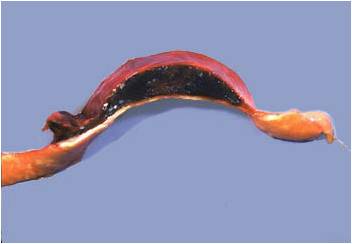
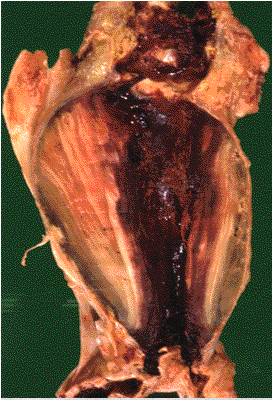
Aortic aneurysm
– Atherosclerotic aortic aneurysm affecting the abdominal aorta.
– This aneurysm is complicated by a thrombus.
– Other complications include rupture and pressure on other structures.

2- Small Blood vessel changes
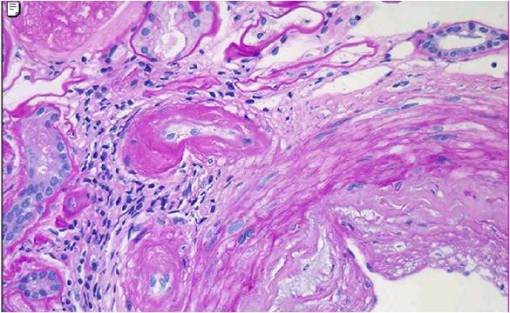
Benign arteriolosclerosis
Benign arteriosclerosis
Atheroma is severe
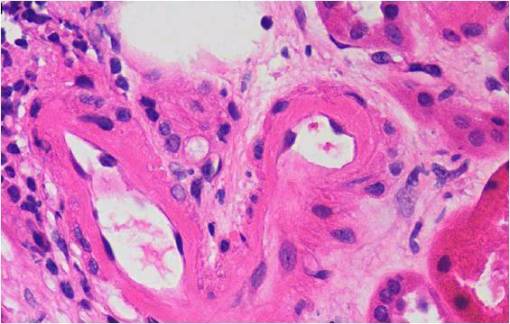
hyalinosis and elastosis
Both changes below lead to narrowing of the blood vessels and ischemia of the affected parts and also increased peripheral resistance.
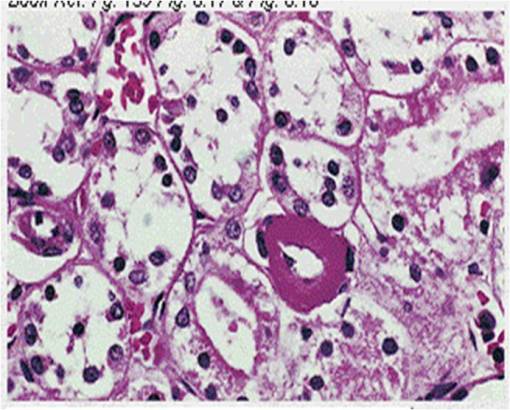
Hyalinosis

Elastosis
3) Renal changes
– Arteriolosclerosis leads to progressive ischemia of the nephron, with eventual destruction of glomeruli and atrophy of the tubular system.
– When hypertension has produced significant nephron ischemia and fibrosis, the kidney is said to have developed benign hypertensive nephrosclerosis (primary contracted kidney).
– Renal ischemia and fibrosis will result in activation of the renin-angiotensin system with further elevation of the blood pressure
– When sufficient nephrons become non functioning, the patient develops progressive chronic renal failure.
– This is a common and important cause of chronic renal failure in the middle-aged and elderly population.
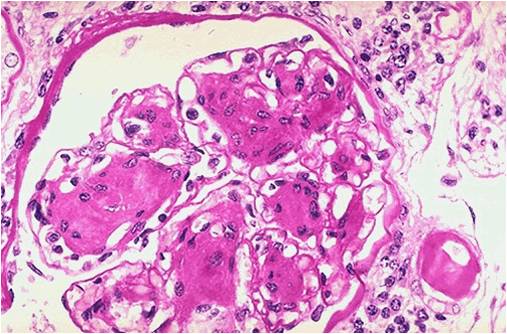
1-Hyalinosis and elastosis of afferent and efferent arterioles ….. Ischemic necrosis of glomeruli and related nephron….. Fibrosis…..contraction.
2- Compensatory hypertrophy of other nephrons.
1+2 are called primary contracted kidney
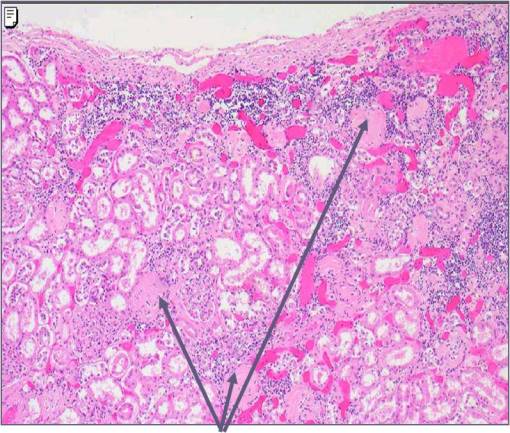
II- Malignant hypertension
– It is elevation of the blood pressure suddenly up to 200/110.
– Course is short for months (unless on top of benign hypertension)
– It produces lesions different from benign hypertension.
1) Vascular changes
Cellular proliferation


necrotizing arteriolitis

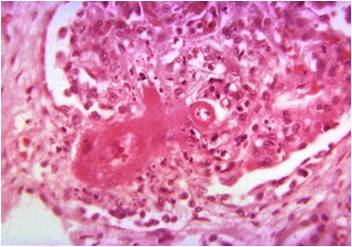
Necrosis of small blood vessels with increased pressure leads to small focal hemorrhages
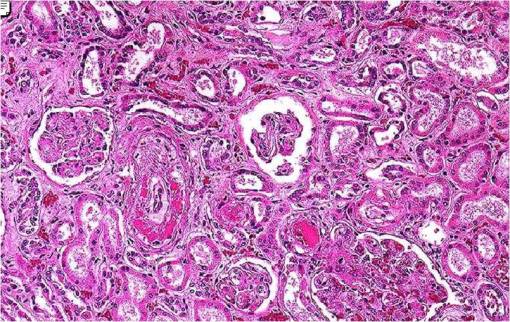
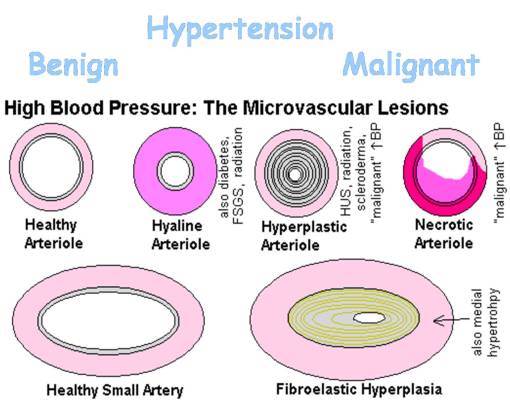
4) Brain Affection
– Hypertensives are particularly prone to develop massive intracerebral hemorrhage due to rupture of intracerebral blood vessels.
– Small vessel damage within the cerebral hemispheres produces micro-infarcts in the form of small areas of brain destruction filled with fluid (hypertensive lacunae).

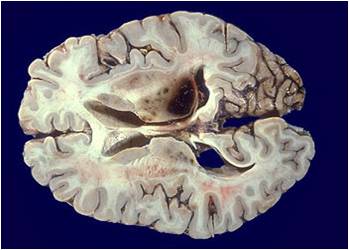
Cerebral hemorrhage
5) Retinal changes
– Affection of the retinal blood vessels leads to….
1- Retinal edema and exudates.
2- Retinal hemorrhage.
Causes of death in hypertension
1- Heart failure
2- Cerebral strokes
3- Chronic renal failure.
CLINICAL MANFESTATIOS OF SYSTEMIC ARTERIAL HYPERTENSION
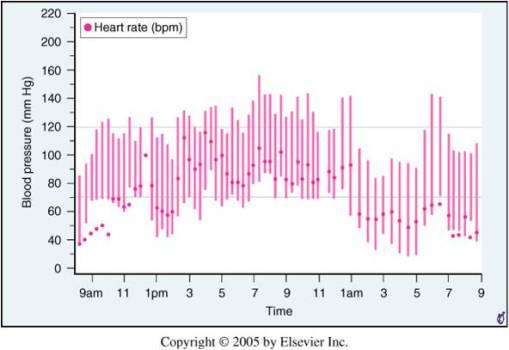
FIGURE 37-2 Computer printout of blood pressure readings obtained by ambulatory blood pressure monitoring over a 24-hour period beginning at 9 <span class=”sc” >AM.
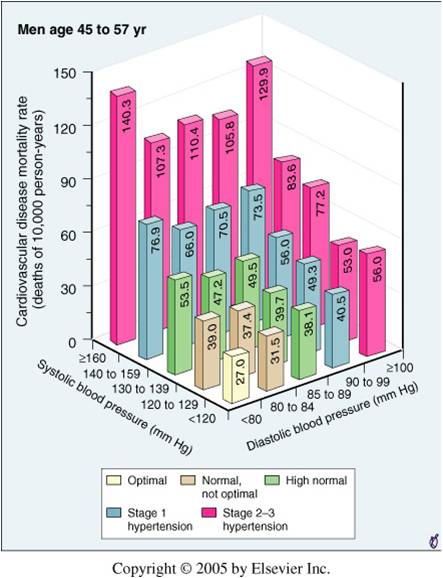
FIGURE 37-4 Age-adjusted cardiovascular disease mortality rate by systolic and diastolic blood pressure level used to define each JNC-VI stratum among the men aged 45 to 57 years enrolled in the Multiple Risk Factor Intervention Trial from 1973 to 1975 and followed through 1996. (Modified from Domanski M, Mitchell G, Pfeffer M, et al: Pulse pressure and cardiovascular disease-related mortality. JAMA 287:268, 2002.)

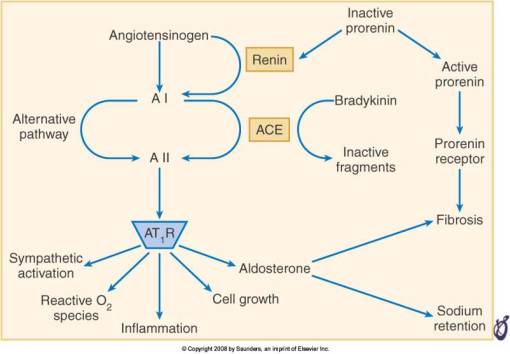
PREVALENCE
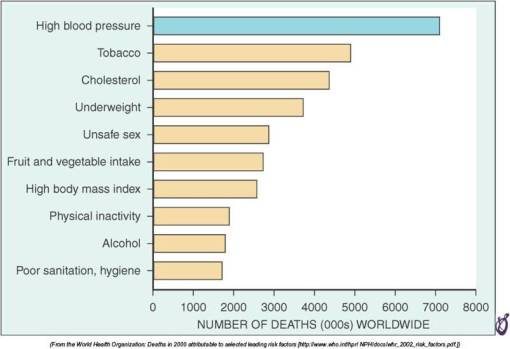

FIGURE 37-1 International Society of Hypertension prevalence of hypertension among three populations, ages 35 to 74 years: InterASIA (2000–2001), the Egyptian National Hypertension Project (1991–1993), and the Third National Health and Nutrition Examination Survey (1989–1994). (From Gu D, Reynolds K, Wu X, et al: Prevalence, awareness, treatment, and control of hypertension in China. Hypertension 40:925, 2002.)

FIGURE 37-6 Prevalence of high blood pressure by age and race or ethnicity for men and women 18 years and older in the U.S. population. Data bars marked with an asterisk are based on a sample size that did not meet the minimum requirements of the National Health and Nutrition Examination Survey (NHANES) III design or relative SEM greater than 30 percent. (Data from Burt VL, Whelton P, Roccella EJ, et al: Prevalence of hypertension in the US adult population: Results from the Third National Health and Nutrition Examination Survey 1988–91. Hypertension 25:305, 1995.)
CLINICAL EVALUATION OF HYPERTENSIVE PATIENT
GOALS
BLOOD PRESSUE MEASURMENT
SECONDARY CAUSES OF HYPERTENSION
TARGET ORGAN DAMAGE
OTHER CARDIVASCULAR RISF FACTORS
BLOOD PRESSURE MEASUREMENT
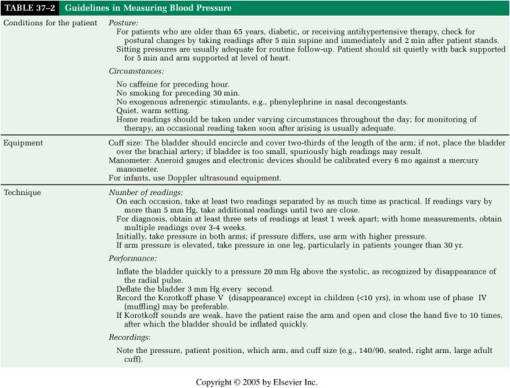
TABLE 37-2 Guidelines in Measuring Blood Pressure
SECONDARY CAUSES OF HYPERTENSION AND OTHER CARDIOVASCULAR RISK FACTORS
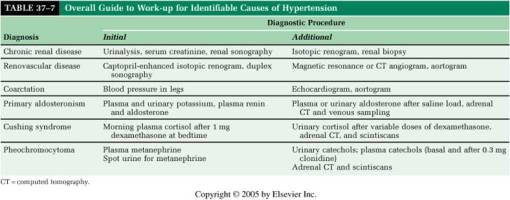
TABLE 37-7 Overall Guide to Work-up for Identifiable Causes of Hypertension

TABLE 37-12 Clinical Clues for Renovascular Hypertension

TABLE 37-14 Syndromes of Mineralocorticoid Excess
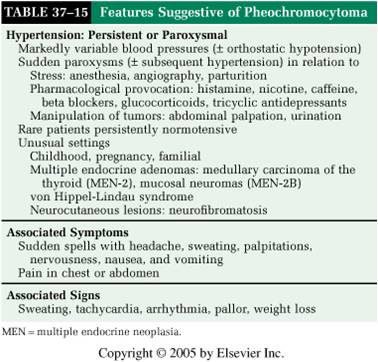
TABLE 37-15 Features Suggestive of Pheochromocytoma
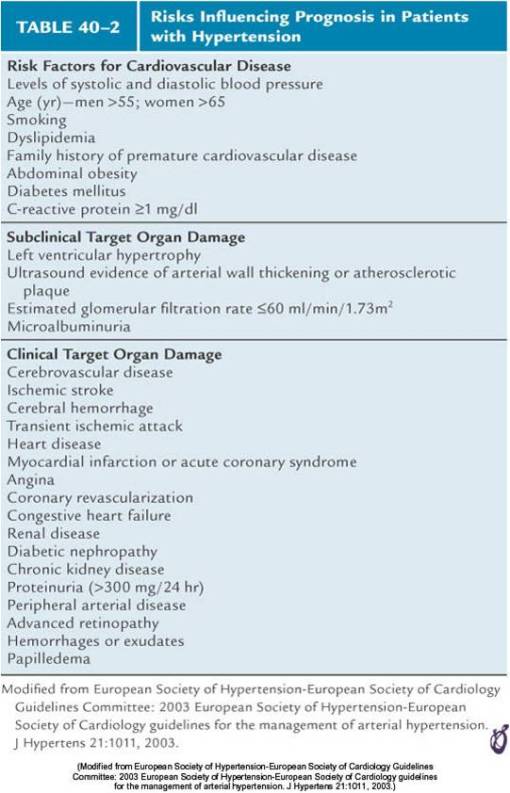
HYPERTENSIVE CRISIS
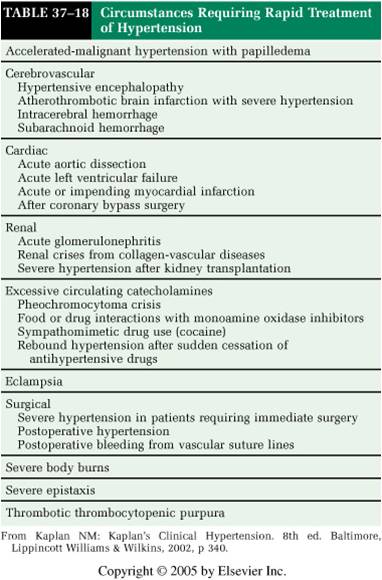
TABLE 37-18 Circumstances Requiring Rapid Treatment of Hypertension
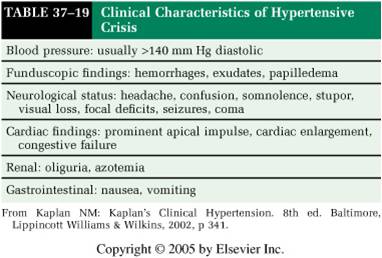
TABLE 37-19 Clinical Characteristics of Hypertensive Crisis



No trackbacks yet.